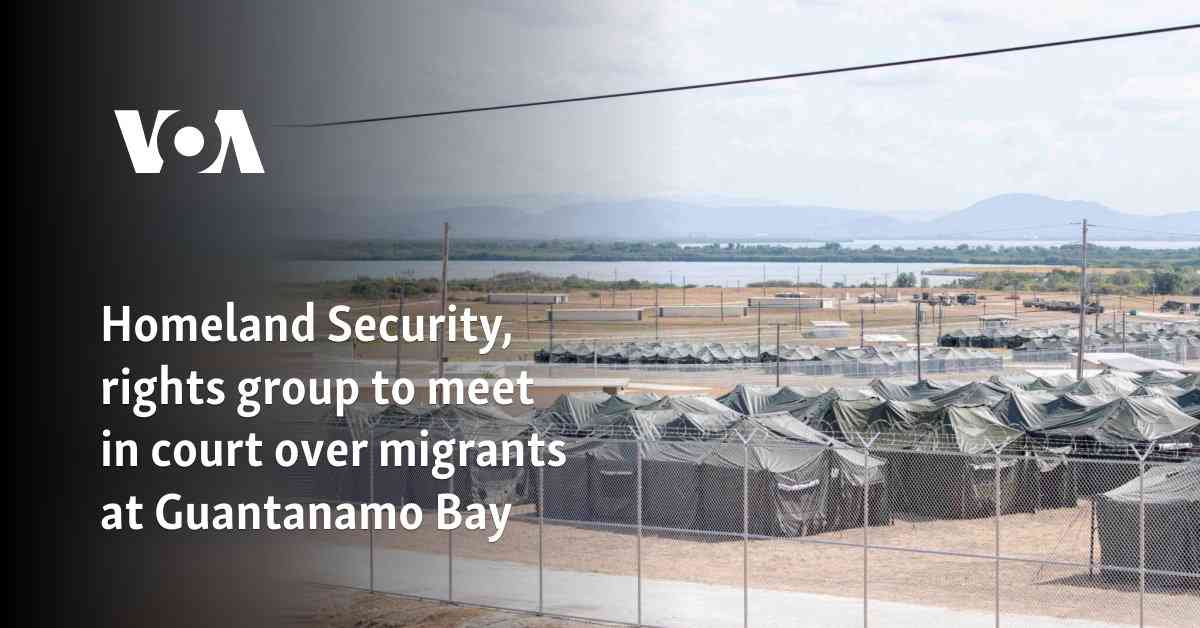In a high-stakes legal battle set to unfold in a U.S. District Court in Washington, U.S. government lawyers are poised to clash with attorneys representing civil and immigration rights groups. At the heart of the impending courtroom showdown are two lawsuits aimed at challenging the utilization of a U.S. naval base in Cuba to detain migrants awaiting deportation. The legal skirmish pits the Department of Homeland Security and Secretary Kristi Noem against rights groups asserting that the government’s actions at Naval Station Guantanamo Bay violate the U.S. Constitution by denying migrants access to legal representation and attempting to relocate them to the base without proper legal authority.
Amid mounting tensions and legal wrangling, DHS officials have remained tight-lipped, refraining from comment on the impending court proceedings. However, the agency has vehemently refuted the allegations leveled against them, casting aspersions on the motives of the organizations spearheading the lawsuits. A nameless DHS spokesperson went so far as to accuse the American Civil Liberties Union of prioritizing open borders over public safety, dismissing the legal challenges as “baseless” and suggesting a reevaluation of the organization’s nomenclature.
The roots of this contentious legal saga can be traced back to President Donald Trump’s early tenure, during which he floated the prospect of leveraging the Guantanamo Bay naval base for mass deportations. Homeland Security’s Noem endorsed the base as a fitting containment facility for what she deemed “the worst of the worst,” signaling a seismic shift in immigration policy under the new administration. Proposals to accommodate up to 30,000 migrants on the base were bandied about, heralding a wave of controversial measures aimed at streamlining deportation processes.
Despite these grandiose plans, the actualization of such initiatives fell short of expectations. While Guantanamo Bay did see an influx of “high threat illegal aliens” in early February, logistical constraints hampered the base’s capacity to accommodate the projected volume of detainees. A U.S. defense official, speaking on condition of anonymity, revealed that the existing infrastructure at the base could only house a fraction of the anticipated population, leading to a series of deportations and transfers to other facilities to alleviate overcrowding.
As tensions simmered and the legal landscape grew increasingly complex, a recent development threw a curveball into the proceedings. Reports surfaced indicating the evacuation of all remaining migrants from Guantanamo Bay, with the detainees being airlifted to Louisiana. The move, executed under a cloak of secrecy and without official communication from DHS or ICE, elicited a wave of criticism from immigrant rights advocates. Pedro Sepulveda of the International Refugee Assistance Project decried the clandestine transfers as a violation of human dignity and a blatant disregard for the rule of law, calling for an end to the practice of detaining immigrants at Guantanamo once and for all.
In the wake of these tumultuous events, the legal showdown between Homeland Security and rights groups looms large, promising to shed light on the constitutional implications of the government’s actions. As the stage is set for a dramatic courtroom face-off, the fate of Guantanamo Bay as a migrant detention facility hangs in the balance, with broader implications for immigration policy and civil liberties in the United States. The battle lines have been drawn, and the outcome of this legal clash is poised to shape the future landscape of immigration enforcement in the country.
The saga of Guantanamo Bay and its role in the immigration debate is far from over, as stakeholders on both sides gear up for a protracted legal tussle that could have far-reaching consequences. Stay tuned as the courtroom drama unfolds, revealing the intricate interplay between national security imperatives, civil liberties, and the rule of law in the United States.














